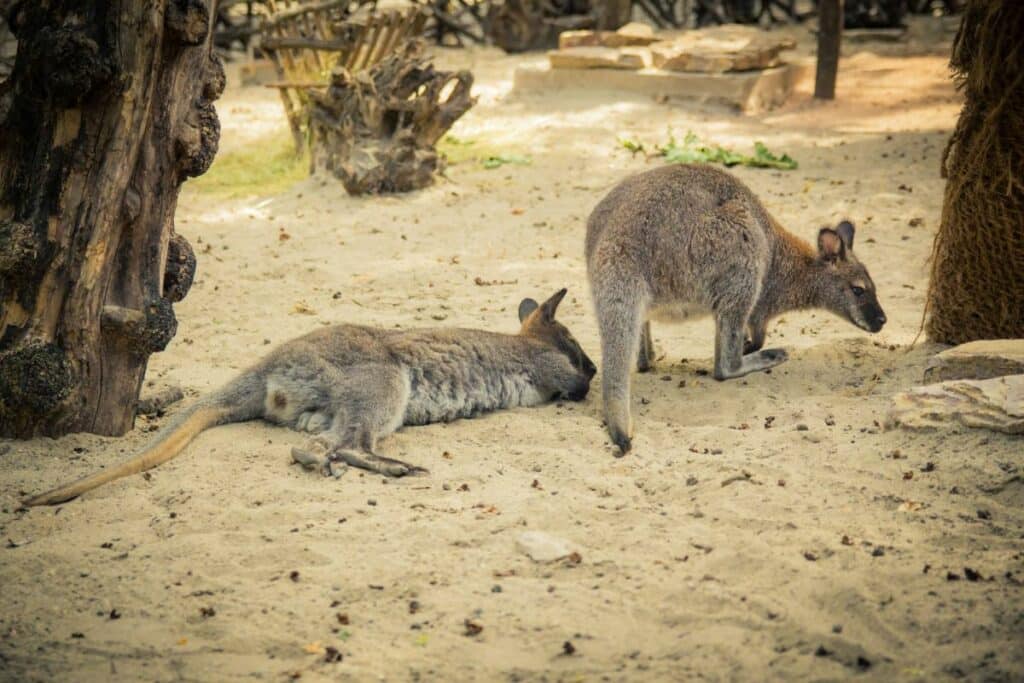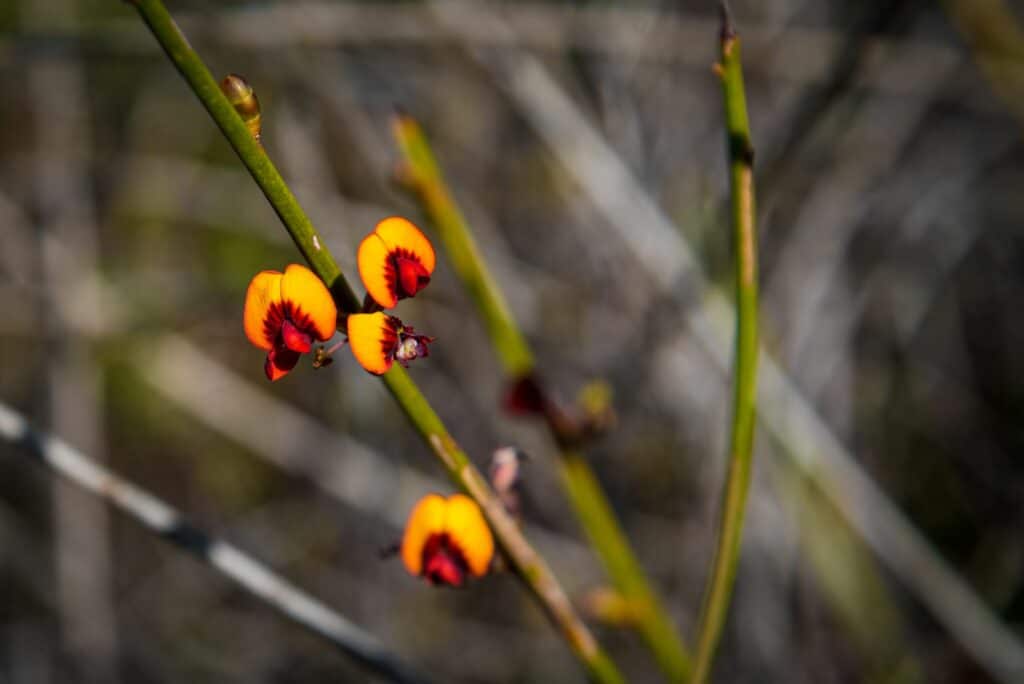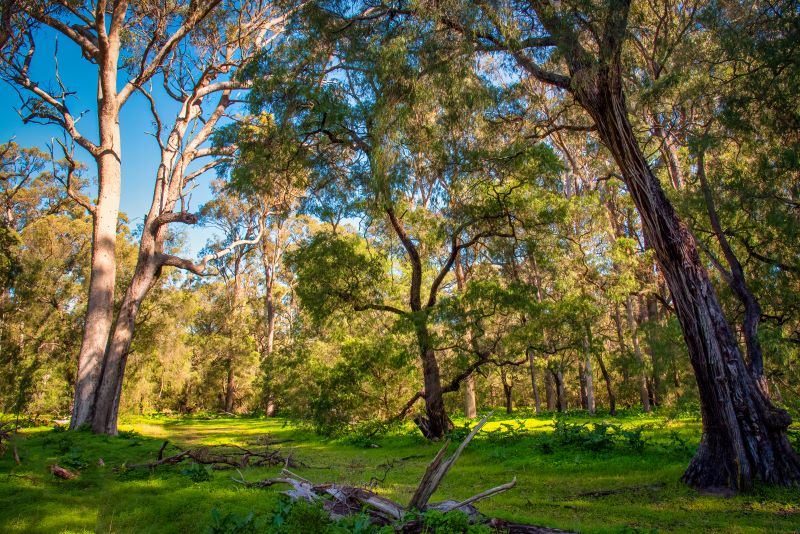The Tuart Forest National Park: It’s A Natural Stunning Sanctuary
Situated within the picturesque landscapes of Western Australia lies a true natural gem – Tuart Forest National Park. This park, renowned for its majestic Tuart trees, is a testament to the region’s rich biodiversity and unique flora. Let’s take a look into the allure of this forest and uncover what sets it apart from other woodlands.
The Tuart Tree
At the heart of Tuart Forest National Park stands the magnificent Tuart tree (Eucalyptus gomphocephala), a species revered for its grandeur and rarity. These towering giants, reaching heights of up to 40 meters, are among the world’s most significant remaining Tuart trees. Endemic to the Swan Coastal Plain, these trees form an integral part of the park’s ecosystem, providing habitat for many wildlife.
Unique Features of the Tuart Forest National Park
What sets Tuart Forest National Park apart from other forests is its exclusive focus on conserving the Tuart tree. Unlike many other woodlands, which feature a mix of tree species, this park is dedicated to preserving the Tuart’s natural habitat. As a result, visitors to the park are treated to a singularly unique experience, immersing themselves in a forest dominated by these majestic trees.
Biodiversity of the Tuart Forest National Park
Despite its focus on the Tuart tree, the park is home to diverse flora and fauna. The canopy of the Tuart trees provides a habitat for various bird species, including the iconic Carnaby’s black cockatoo. The understorey is teeming with life, with wildflowers adding splashes of colour to the forest floor. Additionally, the park is home to some rare and endangered species, making it a hotspot for conservation efforts.

Rare and Endangered Species:
- Carnaby’s Black Cockatoo (Calyptorhynchus latirostris): This iconic bird species is native to Western Australia and is classified as endangered. The Tuart Forest National Park provides a crucial habitat for the Carnaby’s black cockatoo, offering nesting sites and food sources within the Tuart tree canopy.
- Western Ringtail Possum (Pseudocheirus occidentalis): The Western ringtail possum is a tree-dwelling marsupial endemic to the southwest of Western Australia. Habitat loss has significantly impacted its population, classifying it as critically endangered. The park provides a refuge for this species, with the Tuart trees offering shelter and food.
- Quokka (Setonix brachyurus): While not typically associated with forests, the quokka is found in small numbers within the Tuart Forest National Park. This marsupial is classified as vulnerable due to habitat destruction and predation by introduced species. The park plays a crucial role in conserving this unique species.
- Tuart Woodland Snail (Bothriembryon indutus): This tiny terrestrial snail is endemic to the Tuart woodlands of Western Australia. It is listed as vulnerable due to habitat loss and degradation. The Tuart Forest National Park provides a protected environment for this species, helping to ensure its survival.
- Baudin’s Black Cockatoo (Calyptorhynchus baudinii): Another species of black cockatoo, Baudin’s black cockatoo is listed as endangered. It relies on mature Tuart trees for nesting and foraging, making the park a vital habitat for its survival.
- Western Brush Wallaby (Macropus irma): This wallaby species is native to the southwest of Western Australia. Habitat loss and fragmentation have led to a decline in its population, resulting in its classification as vulnerable. The park provides a protected area where this species can thrive.
These are just a few examples of the rare and endangered species that call Tuart Forest National Park home. Conservation efforts within the park aim to protect these species and their habitats, ensuring that future generations can continue to enjoy this area’s unique biodiversity.
Trails and Exploration of the Tuart Forest National Park
For those looking to explore this natural wonder, Tuart Forest National Park offers a network of hiking trails that wind through the forest. These trails provide visitors with the opportunity to immerse themselves in the serene natural surroundings of the park, offering glimpses of its unique flora and fauna along the way. Whether you’re an avid hiker or a casual nature enthusiast, the park has something to offer everyone.

Notable Plant Species:
- Tuart Tree (Eucalyptus gomphocephala): The Tuart tree is, of course, the star of the show in Tuart Forest National Park. These majestic trees dominate the forest’s canopy with their tall trunks and distinctive peeling bark. They are impressive in size and play a crucial role in the ecosystem, providing habitat and food for a variety of wildlife.
- Tuart Grass Tree (Xanthorrhoea preissii): Also known as the Tuart spike rush, this plant is a distinctive feature of the park’s understorey. The Tuart grass tree adds a unique aesthetic to the forest floor with its long, slender leaves and tall flower spikes.
- Banksia Species: Several species of Banksia, including Banksia attenuata and Banksia menziesii, can be found in Tuart Forest National Park. These iconic Australian plants are known for their unique flower spikes and are an important food source for native wildlife.
- Wildflowers: During the wildflower season, the understorey of Tuart Forest National Park is a riot of colour, with a variety of species adding splashes of red, orange, yellow, and purple to the forest floor. Species such as the Tuart spider orchid (Caladenia huegelii) and the Tuart bell (Darwinia tenuifolia) are particularly striking.
- Tuart Woodland Plants: The Tuart woodlands are home to various plant species adapted to the unique conditions of the ecosystem. Species such as the Tuart peppermint (Agonis flexuosa) and the Tuart marri (Corymbia calophylla) are common in the park and play an essential role in the area’s ecology.
These are just a few examples of the plant species that can be found in Tuart Forest National Park. Each species plays a unique role in the ecosystem, contributing to the rich biodiversity of this unique woodland. Exploring the park’s hiking trails offers visitors the chance to experience firsthand the beauty and diversity of Western Australia’s flora.

Conclusion: Tuart Forest National Park
Tuart Forest National Park is a testament to the beauty and diversity of Western Australia’s natural landscapes. With its towering Tuart trees, rich biodiversity, and tranquil hiking trails, the park offers visitors a unique and immersive experience. Whether you’re a nature lover, a wildlife enthusiast, or simply looking to escape the hustle and bustle of everyday life, Tuart Forest National Park is a destination not to be missed. The team at Amalfi Resort recommend visiting the park while you stay in Busselton.
Discover Busselton

The Tuart Forest National Park: It’s A Natural Stunning Sanctuary
Situated within the picturesque landscapes of Western Australia lies a true natural gem – Tuart…

10 Spectacular Things To Do in Busselton Australia
At Amalfi Resort, we are a Busselton Beach Resort that likes to recommend things to…

Unveiling Margaret River: It’s An Unsurpassed Journey Into Paradise
Nestled in the heart of Western Australia, the Margaret River region unfolds as a multifaceted…

Margaret River: A Tapestry of Nature, Wine, Adventure, and Culinary Delights
Nestled in the southwestern corner of Australia, the Margaret River region stands as a testament…

